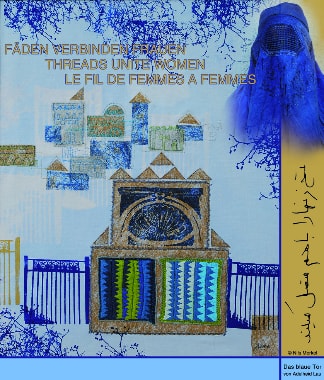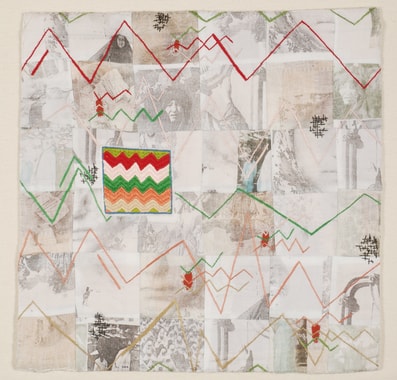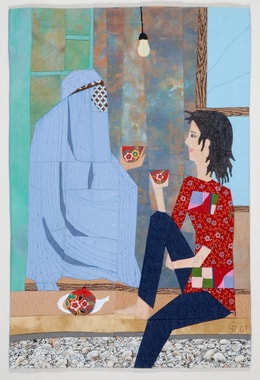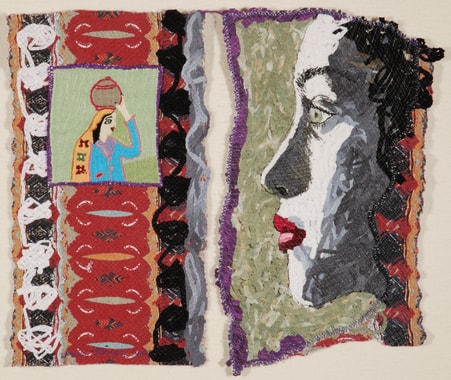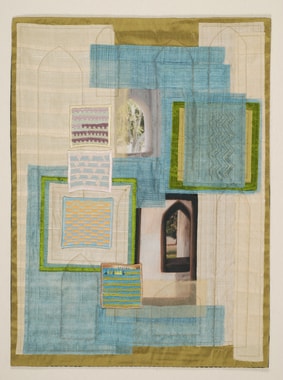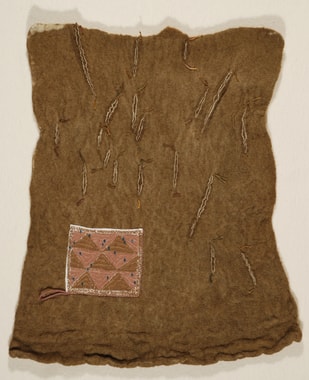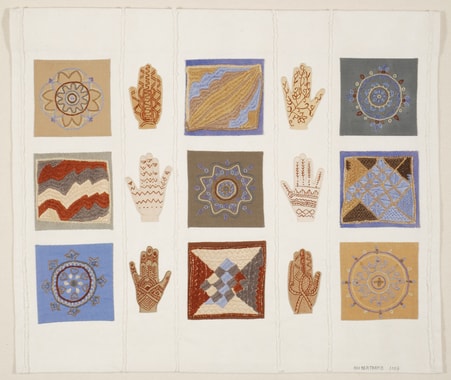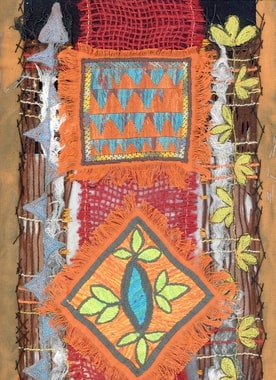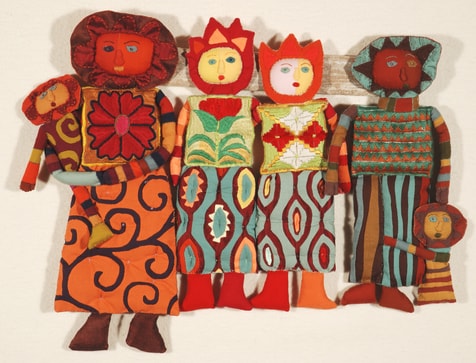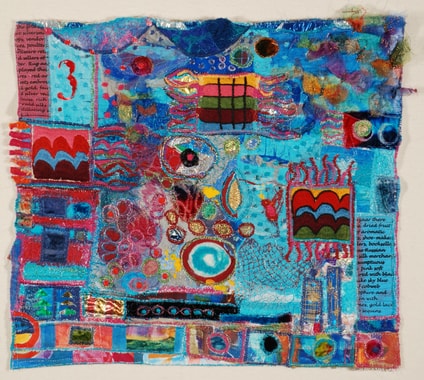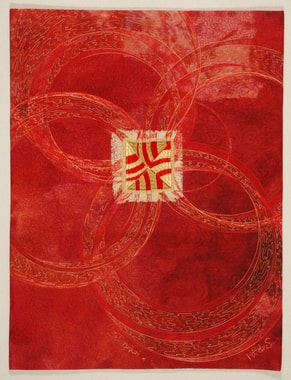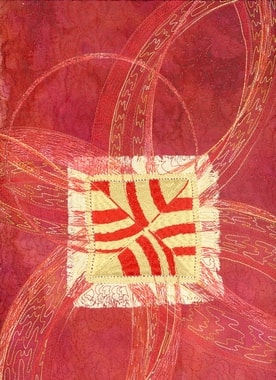Threads unite women
Concept
The embroideries are perfect for combining with other textile techniques, especially using the squares as an eye-catching highlight. The resulting works have symbolic value, not only bringing together two ways of working, but also linking two cultures. The exhibition aims to promote curiosity and openness for a different culture and foster feelings of closeness and solidarity.
For this competition the brief was to incorporate one or more embroidered squares into the submitted work, with no restriction on the techniques employed, but a size limit of 45cm x 60cm for the finished piece. The work of the European artists was understood to be in continuation – or echoing – the Afghan women’s embroidery, i.e. to create a dialogue between two ways of working.
The entries indeed confirmed a strong desire to integrate the embroidery from another culture (the embroidered squares) into one’s own work, to acknowledge its value and the cultural background that gave rise to it and thus bridge the gap between two cultures.
220 textile works were selected from the following European countries: France, Germany, Switzerland, Austria, Italia, Luxembourg, Holland, England, Belgian, Latvia, Norway, Finland, and Spain (one work). Two of the participants were male.
There was a wide range of approaches, from elaborate craft to conceptual art with a large variety of textile techniques employed, including patchwork, quilting, hand and machine embroidery, felting, collage, lace-making, as well as some silk painting and weaving.
The spirit of the exhibition
Among the entries there were several recurring themes:
Women – with or without chadri, the Afghan full body veil, more or less explicitly referred to.
Kites – Khalid Hosseini’s bestseller The Kite Runner, widely read across Europe, as a source of inspiration.
Birds – keeping birds and playing with them is a popular pastime in Afghanistan; also a popular theme among the European artists
Flowers – the large number of flower works indicates that it is a theme of universal appeal. In spite of severe poverty the Afghans take great care of and pleasure in their flowerbeds.
Carpets – works based on carpet designs, a reminder that this is a craft widely associated with Eastern cultures.
Windows and doors – to be taken symbolically as a desire and call for openness and freedom.
As listed in the appendix, the touring exhibition Threads unite women was offered to different exhibiting organizations who each chose a selection from the 220 works using their own criteria. Thus the exhibition took a different shape with its own particular characteristics each time it was shown in a new place – indeed this was part of the concept. In other words, the same exhibition could not be seen twice.
Calls for entry to the competition started in September 2005. The competition was initiated by Catherine Juillerat (France).
The overall responsibility lay with Pascale Goldenberg (Germany), leader of the embroidery project in Afghanistan, who was also in charge of organizing the competition.


